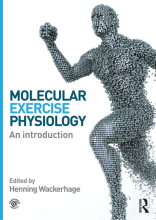Summary: Biologische Psychologie
- This + 400k other summaries
- A unique study and practice tool
- Never study anything twice again
- Get the grades you hope for
- 100% sure, 100% understanding
Read the summary and the most important questions on Biologische psychologie
-
1 Week 1
-
1.1.1 From chemical elements to cell memebrane
This is a preview. There are 4 more flashcards available for chapter 1.1.1
Show more cards here -
Covalent bond (H2O)
Sharing of electrons which forms molecules like water. The water molecule forms because oxygen has 6 electrons in shell 2 which can hold up to 8 and hydrogen has 1 electron in shell 1 which can go up to 2. 2 hydrogen and 1 oxygen atom share their electrons to fill their shells and be more stable. -
This is composed of a double layer of phosopholipids
Cell membrane is composed of ... -
1.1.2 Nerve cells
This is a preview. There are 10 more flashcards available for chapter 1.1.2
Show more cards here -
These are the tips of the axons and send signals to activate post synaptic cells
Terminal buttons are the ... -
Retrograde axoplasmic transport
The transport from the terminal buttons over the axon to the cell body (soma), with the protein Dynein. -
The blood cannot cross the blood brain barrier. How will the neurons receive glucose?
Theastrocytes make contact withblood vessels , takeglucose out of thevessels and bring it to thesoma . From there it can bring it to otherneurons . Why doesn't it go directly to theneurons ? -
1.1.3 Bioelectricity
This is a preview. There are 7 more flashcards available for chapter 1.1.3
Show more cards here -
The average charge of an axon of a squid
-90 mV polarized charge -
The two forces balancing the membrane potential
Diffusion, electrostatics -
Action potentials cannot be gereated in myeline
Myeline blocks Na+ from comming inside the cell -
1.2.6 Neurotransmitters
This is a preview. There are 10 more flashcards available for chapter 1.2.6
Show more cards here -
Amino acids (neurotransmitters)
Neurotransmitters with an amino grou and carboxyl group. Glutamate, Glycine and GABA are amino acid neurotransmitters -
1.2.7 Psychopharmacology
This is a preview. There are 21 more flashcards available for chapter 1.2.7
Show more cards here -
An example of a drug that inactivates the synthetic enzym in a presynaptic cell, that blocks trypotophan hydroxylase.
PCPA (fenclonine) inhibits serotonin synthesis
- Higher grades + faster learning
- Never study anything twice
- 100% sure, 100% understanding
































